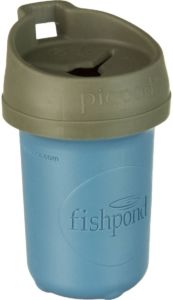Easiest knot to learn
The Non-Slip Loop Knot is a strong, quick and easy knot that creates a natural presentation and gets your weighted flies down quickly. Did you know that the Non-Slip Mono Loop is also known as the “Kreh Loop”
Check out the United Women on the Fly YouTube Channel for instructional videos. We also recommended Animated Knots and Orvis for other knot tutorials. Check out our Online Fly Fishing Classes from more virtual instruction on this and so much more.
non-slip Loop Knot Advantages
Quick and Easy – With a little practice you’ll master this knot.
Natural Presentation – The loop doesn’t grip the fly, it makes a flexible attachment and allows a more natural action. Try using the non-slip loop knot for your dry fly, nymphs, poppers and streamers. You won’t be disappointed.
Line Sinks Faster – Weighted, Bead or Cone Head dives down faster when using a flexible knot. The weighted fly will also dive down with the sink-pause strip method. This can create a natural presentation of aquatic prey.
Strong – it has a strong breaking strength.
steps to tying the non-slip loop not
- Make an overhand knot in the line about 3 inches from the tag end of the line.
- Put the tag end of the leader through the eye of the hook.
- Pass the tag end through the overhand knot.
- Pull the tag end and overhand knot towards the eye of the hook to the desired loop size.
- Wrap the tag end around the main line. More wraps with smaller tippet and less wraps with larger diameter line.
- Make sure all your twists go in the same direction up the main line. (Average number of twists is 3-5).
- Pull the tag end back through the overhand knot.
- Moisten the knot and pull the tag end to cinch the wraps tight.
- Trim tag end.
conservation conversations
Mono takes 600 years and Fluorocarbon can take up to 10,000 years to breakdown. This can pose problems for wildlife and birds that get caught up in the line. PFCs are the chemical building blocks from which fluorocarbon water-repellents are made. “PFC’s are a bioaccumulative compound which are extremely tenacious in the environment and have been found in very very high amounts in species all around the world, many of which are threatened or endangered.” @xicanxfly
Please recycle your micro trash (small bits of trimmed tippet), leader and tippet in the recycle container on the water. If there is no recycle container, many tackle shops also act as convenient line recycling drop-off locations. You can also research a recycling option in your area. There are several articles online discussing other ways to dispose of monofilament and fluorocarbon. Check out the @fishpond Piopod Microtrash Container.





